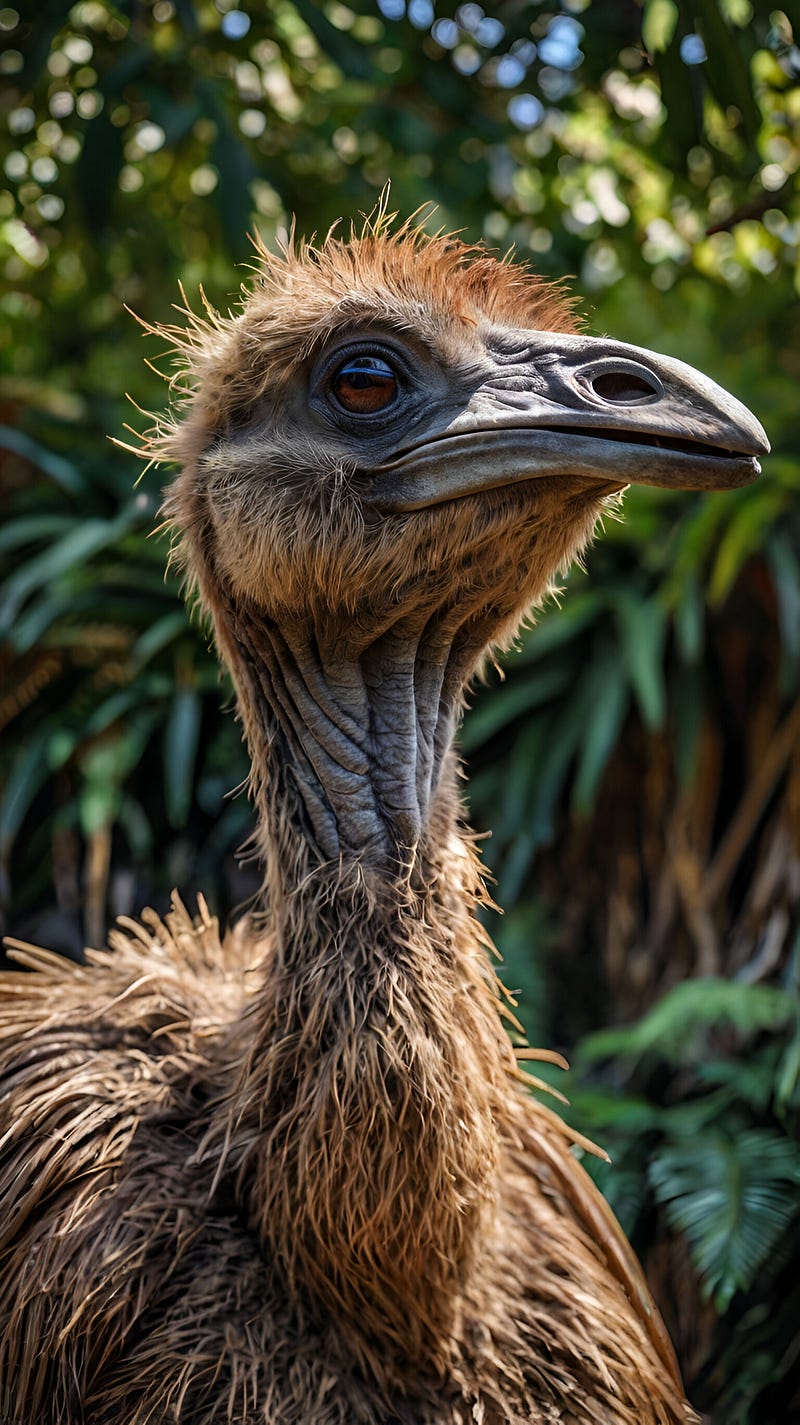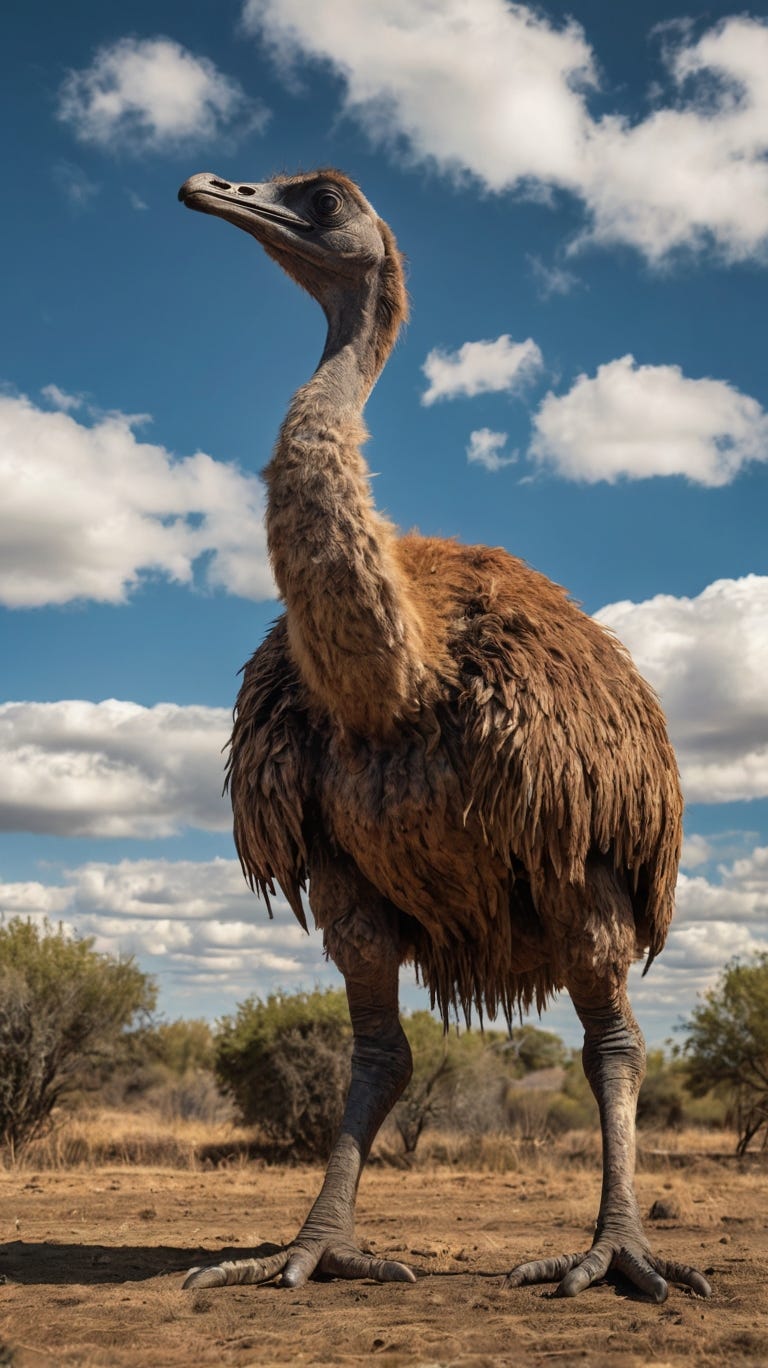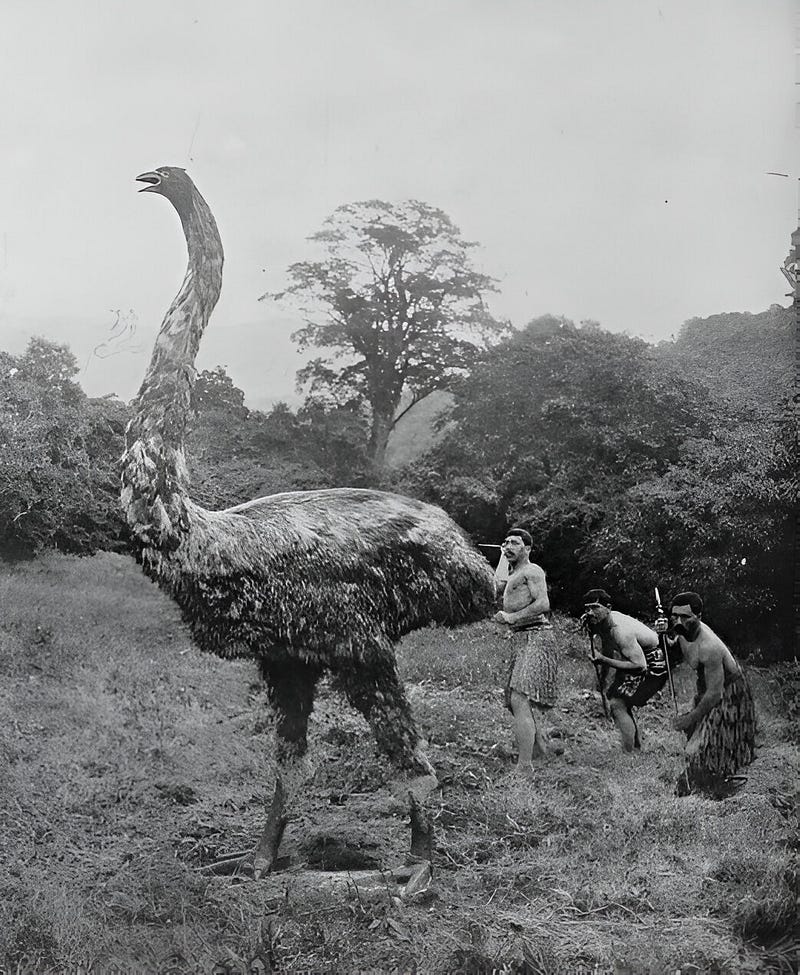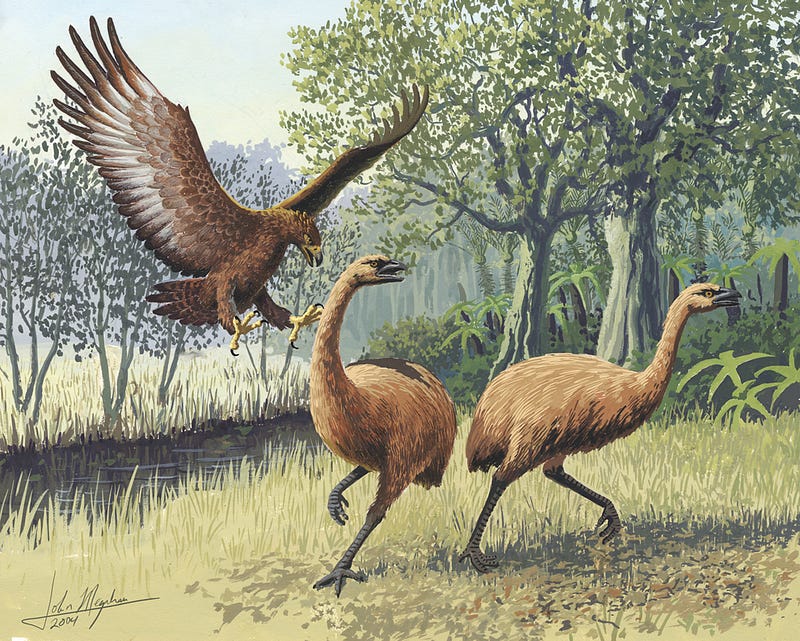The Enigmatic Giant Moa: A Bird Too Large to Endure
Written on
Chapter 1: Introduction to the Giant Moa
The giant moa, a remarkable bird, was not an example of perfect anatomy but was certainly notable for its size. Towering over the ostrich, the largest extant bird, it was also considerably heavier. Ironically, it was this very bulk that contributed to its extinction.
In New Zealand, an isolated archipelago, an extraordinary array of endemic wildlife evolved. With the absence of mammals (aside from bats) and land-based predators, birds became central to the ecosystem. Many species, including the kiwi, takahe, and kakapo parrot, lost their flight capabilities. Among these avian wonders, the giant moas, belonging to the order Dinornithiformes, stood out as the tallest birds ever recorded.
Chapter 2: The Physical Characteristics of the Giant Moa
The tallest individuals of this species could reach heights of up to 3.6 meters when fully upright, similar to the African ostrich. However, with their heads lowered like cassowaries, they would stand around 3 meters tall. Notably, giant moas exhibited pronounced sexual dimorphism; females could weigh over 250 kg, while males were roughly one-third that weight. The differences were so stark that until the early 21st century, scientists mistakenly classified males and females as separate species.
Giant moas sported peculiar brown-red feathers that lacked a central shaft, resembling long hair more than traditional feathers. Their sturdy legs had three toes facing forward and one backward (sometimes just a spur), and their heads appeared disproportionately small compared to their massive bodies. Interestingly, they lacked wings entirely, retaining only a single skeletal remnant. Although their appearance might not be conventionally attractive, perceptions can vary.

Chapter 3: Habitat and Lifestyle of the Moa
In the mammal-free ecosystem of New Zealand, giant moas likely filled a role akin to that of hoofed mammals. A bird weighing 250 kg would require vast amounts of foliage, fruits, and tubers daily. Fossil evidence, including the structure of their skulls and beaks, as well as coprolite analysis, confirms their herbivorous diet.
Moas inhabited diverse environments, from coastal regions to mountainous areas, adapting to both open savannahs and forested regions. Fossilized tracks indicate they moved at a leisurely pace of about 3–5 km/h. Likely social creatures, they traveled in flocks or pairs and may have led primarily nocturnal lives, as suggested by their well-developed olfactory senses. Their nests were simple depressions in the ground where they typically laid one to two eggs. The fragile nature of the eggshells hints that incubation may have been performed by smaller males.

Chapter 4: The Challenges of Classification
Classifying the various species of moas presented significant hurdles for scientists. At one point, researchers identified as many as several dozen distinct species, but today, only nine are recognized. Not all species were as massive as the Dinornis robustus; the smallest were comparable in size to turkeys, and it is believed that the total population of all moa species in New Zealand was around 160,000 individuals.

Chapter 5: Predators of the Moa
The giant moa faced two primary threats. The first was the formidable Haast’s eagle, which could weigh up to 15 kg and was capable of attacking even the largest moas. The second threat emerged in the 13th century with the arrival of humans, specifically Polynesians from the eastern Pacific islands. These flightless birds became an accessible food source.
Lacking natural predators, the giant moas likely did not regard humans as a threat. Unfortunately, hunting rapidly reduced their numbers, especially as moas had a slow reproductive rate. They matured sexually around five to ten years of age and likely raised just one chick annually. Their massive eggs, weighing 3–4 kg, were also sought after by humans. Additionally, the thin shells were prone to breakage during incubation. Human activity altered the ecosystem, with deforestation and fires further endangering these large, flightless birds.
When Dutch explorer Abel Tasman arrived in New Zealand in 1642, the giant moas were already extinct, having been entirely hunted. There are accounts suggesting that smaller species may have survived a bit longer, with whaling ship logs from the 19th century noting sightings of unusual birds.

Chapter 6: The Extinction of the Moa
Moa bones were first brought to Europe in 1840, where they caught the attention of naturalist Richard Owen. However, searches in New Zealand yielded no results. Various theories arose regarding their extinction, from blaming indigenous populations to speculating that their size contributed to their downfall. Some suggested large-scale fires as a cause, overlooking that these were likely ignited by humans. Ultimately, the evidence pointed to the Maori, as vast mounds of moa bones confirmed their hunting practices. Assuming Polynesians arrived around 1280, the giant moa population swiftly dwindled, disappearing within just 100 to 150 years.
Theories about what the remaining Neanderthal genes reveal about our ancestry also provide insights into how interspecies relationships shaped the genetic landscape we know today.
Dear Readers
I want to highlight an important issue impacting content creators like myself on Medium.com. The compensation for our work is often minimal, despite our dedication to producing valuable content. If you appreciate my articles, please consider supporting me on my “Buy Me a Coffee” page. Your contributions, regardless of size, can inspire me to continue delivering engaging and thought-provoking material. Thank you for joining me on this journey!

